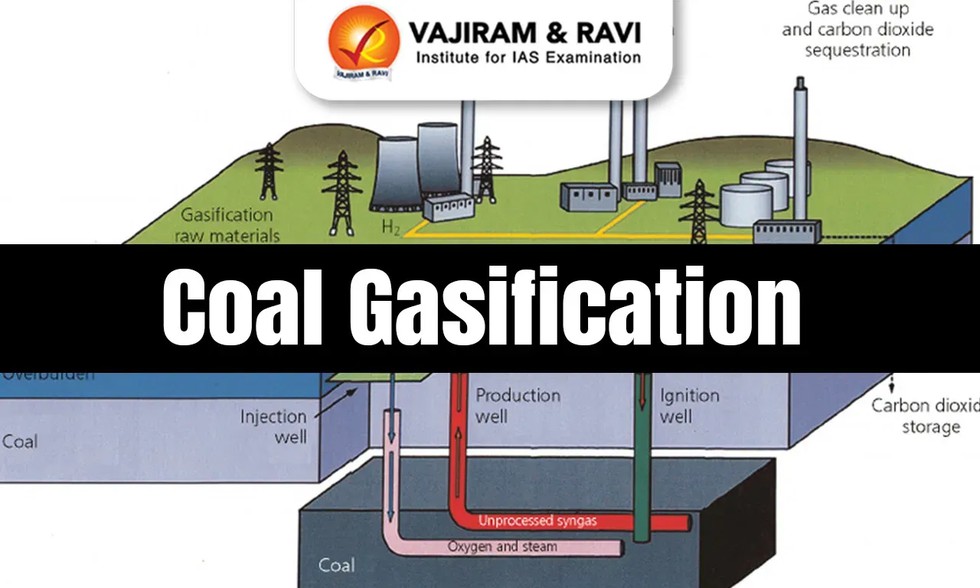What is Coal Gasification?
- Coal gasification is a thermo-chemical process that converts coal into syngas, a synthetic gas composed mainly of Carbon Monoxide (CO), Hydrogen (H₂), Carbon Dioxide (CO₂), Methane (CH₄), and Water Vapour (H₂O).
- Coal is reacted at high temperatures (1000–1400°C) with a controlled amount of oxygen and steam, producing syngas.
Process of Coal Gasification
- Preparation: Coal is finely crushed to increase surface area.
- Gasification reactor: The powdered coal is fed into a reactor with limited oxygen/air and steam.
- Chemical reactions: Coal breaks down into syngas components due to partial oxidation.
- Gas cleaning: Impurities like tar, sulfur, and dust are removed from raw syngas.
Ex-situ vs In-situ Gasification
|
Aspect
|
Ex-situ Gasification
|
In-situ Gasification
|
|
Location
|
Above ground in controlled gasifiers
|
Underground, in coal seams
|
|
Process
|
Coal is extracted and gasified in reactors
|
Oxygen and steam are injected into the coal seam to generate syngas underground
|
|
Application
|
Suitable for shallow reserves
|
Ideal for deep or unmineable coal seams
|
|
Efficiency
|
More energy is used in mining and handling
|
More energy-efficient for deeper deposits
|
About the Financial Incentive Scheme (Launched January 24, 2024)
- Total outlay: ₹8,500 crore.
- Target: Achieve 100 million tonnes of coal gasification by 2030.
- Aim: To efficiently utilise India’s domestic coal reserves for sustainable industrial development.
- It promotes both public and private sector participation for setting up coal gasification infrastructure.
- Aligned with India’s goal of a clean coal transition, energy security, and reduction of import dependency.
